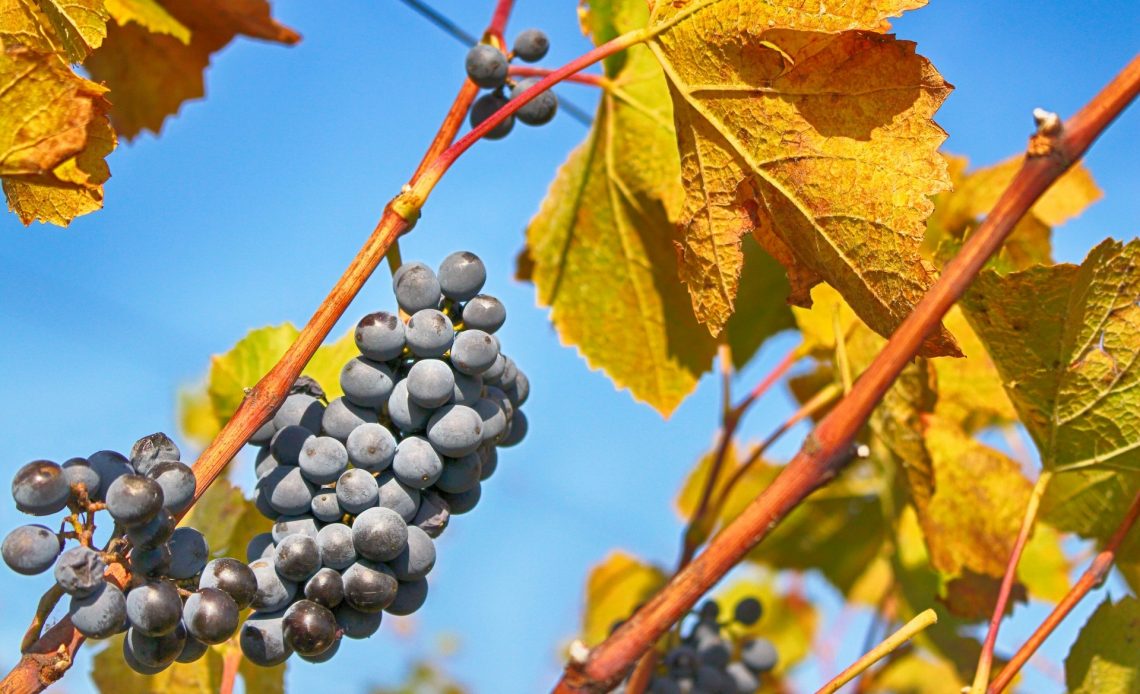

We’re here to help! Wild Yards is a completely free website that is 100% dedicated to helping you create a wildlife-friendly, sustainable yard. Read more
WildYards is reader-supported. When you buy a product through a link on our site, we may earn a comission. Every product is independently selected by our (obsessive) editors and our reviews are unbiased and objective. Read more about our mission or our privacy policy.
You might think that because you’re short on space, you can’t grow much. But that’s not true at all!
There are plenty of vining plants that can be trained to grow vertically to free up ground space for even more plants.
Winter squash, zucchini, and pumpkins are just a few veggies that can be grown on trellises.
And, if you’re all set for vegetables, there are a number of fruit vines you can grow instead.
So before you sit down to plan your garden for the upcoming growing season, keep the following fruit vines in mind.
Grapes, blackberries, raspberries, strawberries, and passion fruits all grow on vines. Cantaloupes, honeydew melons, and kiwis are delicious choices, too. Even large fruits, like watermelons, can be trained to grow up a trellis with a little help.
14 Fruit vines to grow in your garden
Fresh fruit will spoil you. Once you’ve tasted homegrown berries and melons, it’s hard to go back to storebought.
If you thought you had to give up growing fruit just because you have a small backyard, think again.
By choosing the right plants for your space, you can grow plenty of fresh fruits to enjoy throughout the growing season.
Here are 14 vining fruits that can be trained to grow up a trellis whether you have a large open space, or are only growing in containers.
Grapes
Whether you plant your grapes in the ground or in a large pot, these plants quickly take to growing up a trellis.
Just be sure to plant your grape vine in sandy to loamy soil that drains well. Good drainage is also a must, as grapevine hates sitting in muddy soil.
Grapes are just as lovely to look at as they are to eat.
With their lush green foliage and clusters of delicious fruits, grapes are as much a feast for the eyes as they are for the taste buds.
Plant your grapes along a fenceline or on a decorative trellis to dress up the boring corners of your backyard.
Purchase table grapes, like Flame Seedless, for snacking, or look for wine grapes like Cabernet Sauvignon if you want to make your own wine.
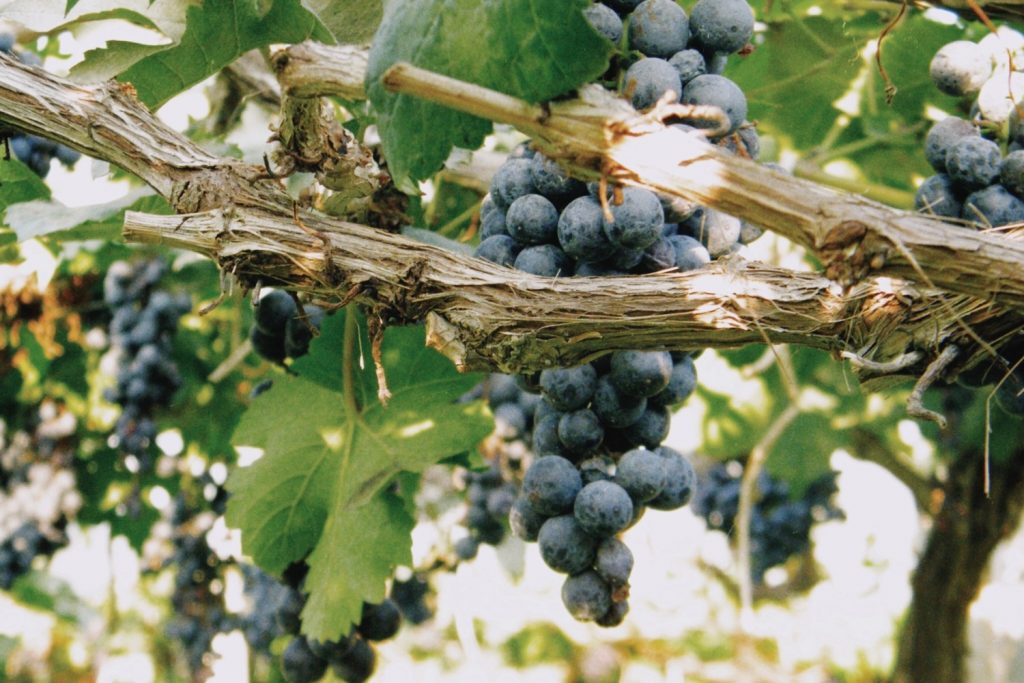
Honeydew melons
Honeydew melons share similar growing requirements to cantaloupes, preferring to grow in slightly acidic soil that drains well and in full sunlight.
Although these melons start out green, they gradually become paler as they ripen. The flesh is cream-colored and deliciously sweet — the perfect topping for oatmeal, parfaits, and pancakes.
Honeydew melons grow well in container gardens. Simply set a sturdy stake in their pot, use wire to fasten a piece of lattice to it, and the vines should have no trouble latching on.
Fruits are ready to be harvested around 100 days after sowing seeds.
A single honeydew plant has the potential to produce 4 to 5 melons, giving you plenty of fresh fruit to enjoy this summer.
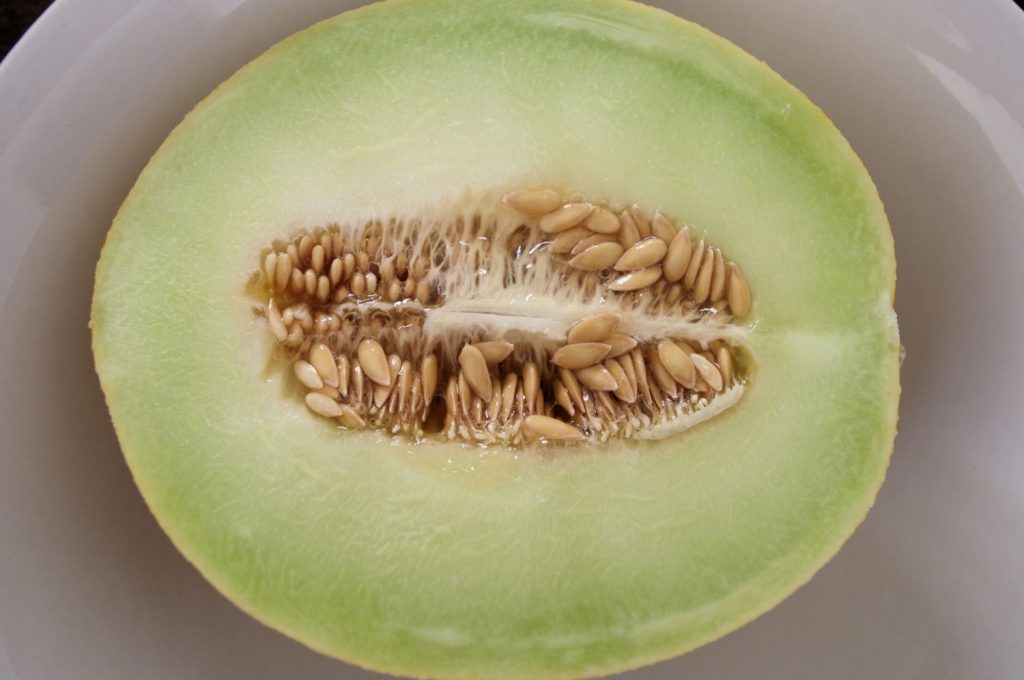
Kiwis
These tart and tangy fruits are fuzzy and brown on the outside, bright green and juicy on the inside.
Kiwis are surprisingly easy to grow, thriving in partial sunlight and well-draining yet fertile soils.
You can easily train your kiwi fruit vine to climb a trellis. Plants grow quickly at a rate of around 10 to 20 feet in a single season.
You may find you need to trim the longest tendrils just to keep this plant in check!
Kiwi plants benefit from being fertilized with nitrogen-rich organic materials, like manure. This encourages the plants to produce dozens of delicious fruits.
Be sure to water your kiwi vine well. This also promotes healthy fruit production.
Cucumbers
We tend to think of cucumbers as vegetables, but they’re considered fruits. In fact, cucumbers are actually considered to be pepos, which are a type of berry.
Whether you decide to slice your homegrown cucumbers to make a fruit salad, or can them to make delicious pickles instead is up to you.
Considering the fact that one cucumber plant can produce up to 15 small cucumbers per season, you may get enough fruits to try making both!
Cucumbers are easy to grow. It’s one of the reasons why so many gardeners love them. The seeds germinate quickly, and plants thrive without much fuss.
Just give them 6 or more hours of sunlight, plant them in sandy to loamy well-draining soil, and they’ll be good to go!
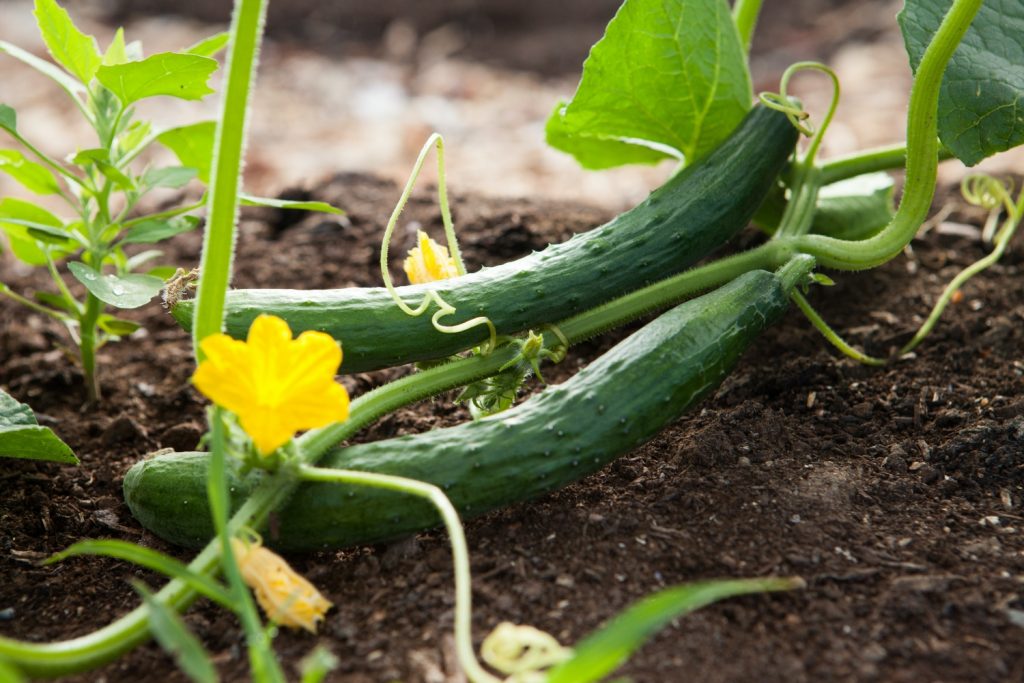
Chocolate vine
Chocolate vine is often grown for its beautiful burgundy star-shaped flowers that produce a strong perfume with hints of — you guessed it! — chocolate.
However, the chocolate vine also produces small purple-brown fruits. Although the fruits are not very palatable to humans, birds, squirrels, and deer will often sample them.
Chocolate vine grows very quickly. So much so that it can snuff out surrounding plants if it isn’t kept under control.
Whether you choose to plant your chocolate vine in containers or out in your flower beds, be at the ready with your pruning shears to keep the plant’s foliage in check.
Strawberries
Who doesn’t love a good strawberry?
These deliciously juicy berries are the taste of summertime and they’re a great addition to drinks like lemonade and smoothies, as well as desserts like shortcakes and pies.
Strawberries grow best in full to partial sunlight. The warmer your growing zone, the more shade your strawberries will need, particularly in the afternoon.
Plant your strawberries in well-draining soil that is somewhat fertile. A mixture of compost and horticultural sand usually does the trick.
Strawberries are perfect for patio gardens because they grow well in small containers.
Use tomato cages or a small decorative trellis to give your strawberries some support as they grow.
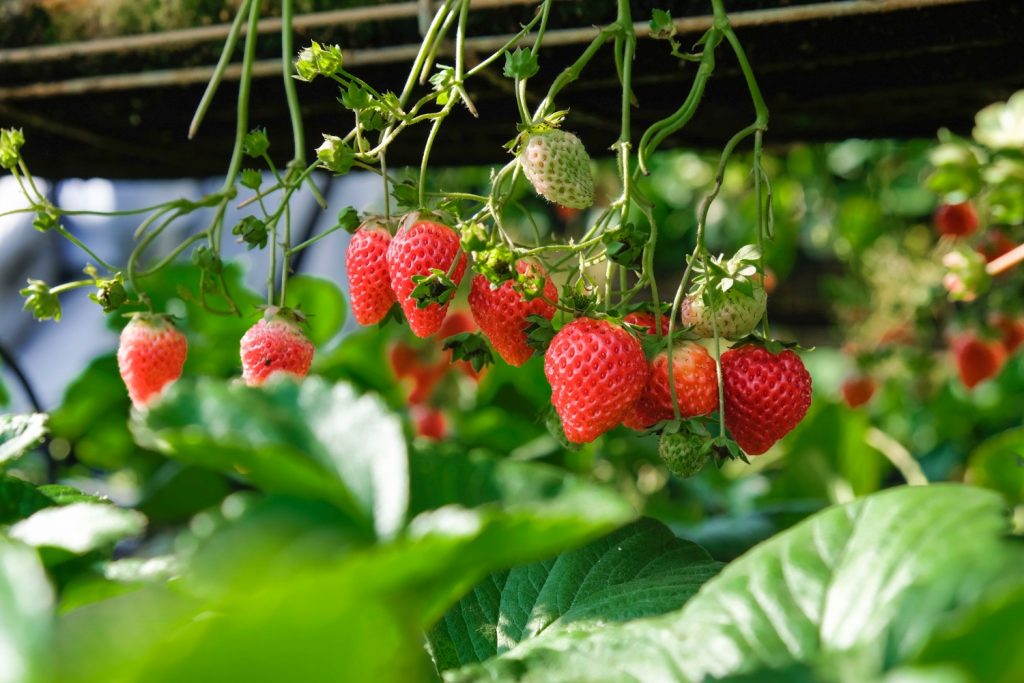
Dragon fruit
These bright pink spiked fruits have a tantalizingly sweet, yet tart center. The flesh itself is white with tiny black seeds peppered throughout.
Dragon fruits can be used to flavor homemade ice creams and sorbets. They’re also tasty all on their own!
Also called pitayas, dragon fruits are native to subtropical regions, so they grow best in warm, humid climates. Plants prefer fertile, loamy soil that drains well.
Although the dragon fruit is easy to grow, it does get pretty big. You’ll need a large patio or small backyard to give this fruit vine enough space to branch out.
You’ll also need to be sure to support your dragon fruit plant with a custom-made trellis — fortunately, we can help you build one!
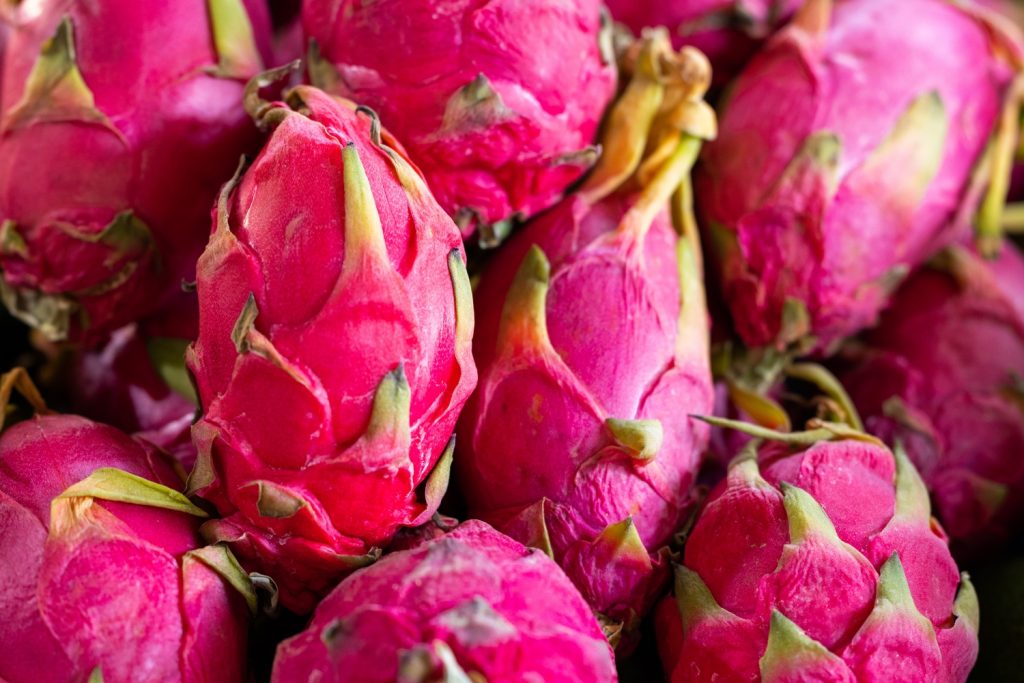
Watermelons
Sometimes we forget that watermelons are vining plants. After all, the melons themselves grow to be so large that the plants are usually just allowed to sprawl out along the ground.
But you don’t have to have a ton of space to grow watermelons. With a little careful planning, you can grow watermelons on a trellis, in spite of their large size.
If you want to plant watermelons in your tiny backyard, choose smaller varieties, like ‘Sugar Baby’.
Grow plants in 5-gallon buckets with simple lattice trellises to give them something to latch onto, and use pantyhose to support the melons as they ripen.
Watermelons are so rewarding to grow because they’re easy keepers.
Seeds germinate quickly, and plants grow like weeds, especially in the warm summer months. If you run out of friends to share your homegrown watermelons with, try pureeing the leftovers and freezing them to make a sugar-free sorbet. Delicious!
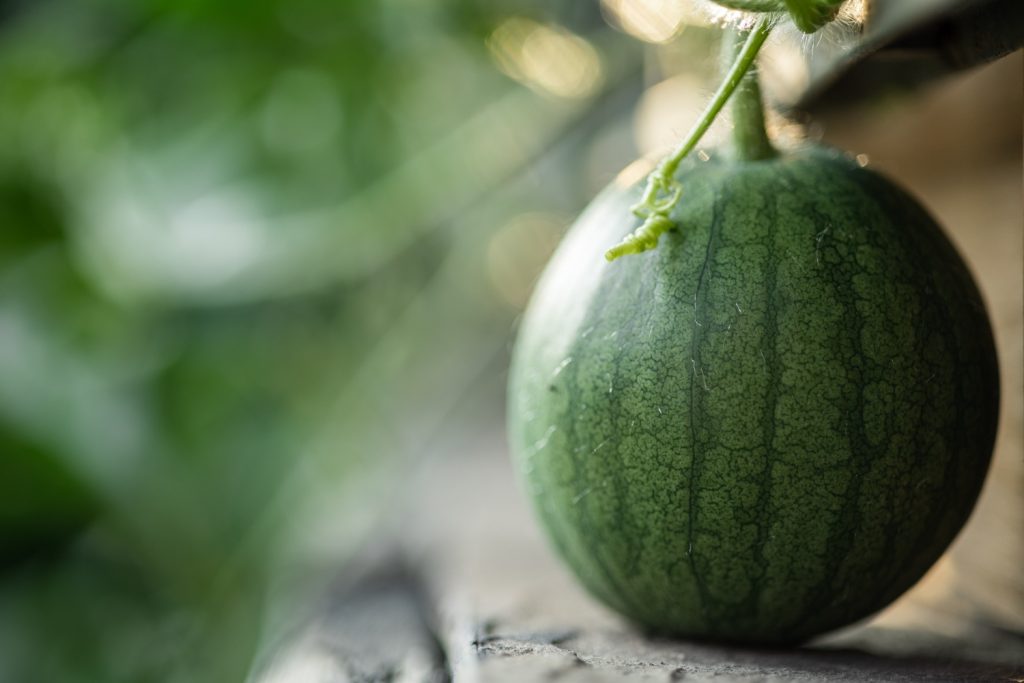
Blackberries
If you want to grow some fruit vines and attract more wildlife to your backyard at the same time, choose blackberries.
When plants flower in early summer, they attract bees and moths, who love visiting their delicate white blossoms.
As the blooms give way to fruits, prepare to enjoy some serious birdwatching.
Songbirds like tanagers, mockingbirds, robins, and thrushes love visiting these berry vines. Wild turkeys are big fans of blackberries, too.
Since blackberry vines are such prolific producers, there will still be plenty of berries for you and your family to enjoy, even after the birds have finished scrounging around them.
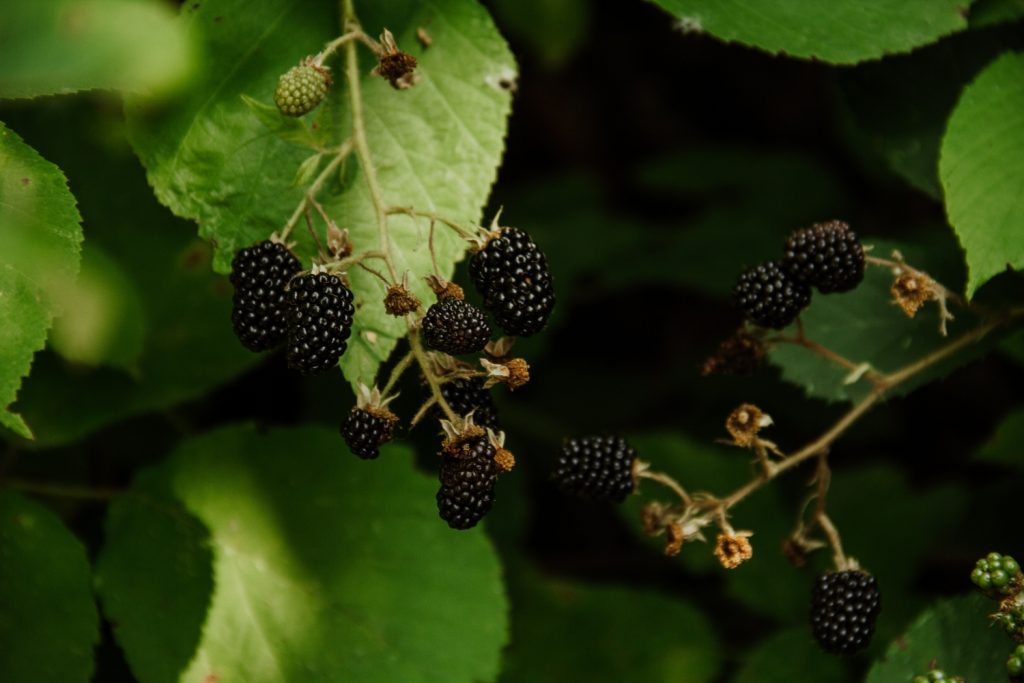
Hops
Everybody knows that hops are used to make beer. But these tasty blossoms can do a lot more than that.
Hops flowers can be used to add flavor to sauces, soups, and salads.
Interestingly, hops are a rich source of xanthohumol, a beneficial flavanoid that may be useful in preventing and treating insulin resistance, high cholesterol, and obesity.
At the height of the growing season, provided all of the plant’s growing needs are met, hops can grow up to 12 inches a day.
So if you’re looking for a fast-growing fruit vine to grow over your fence and give you some more privacy, look no further than hops.
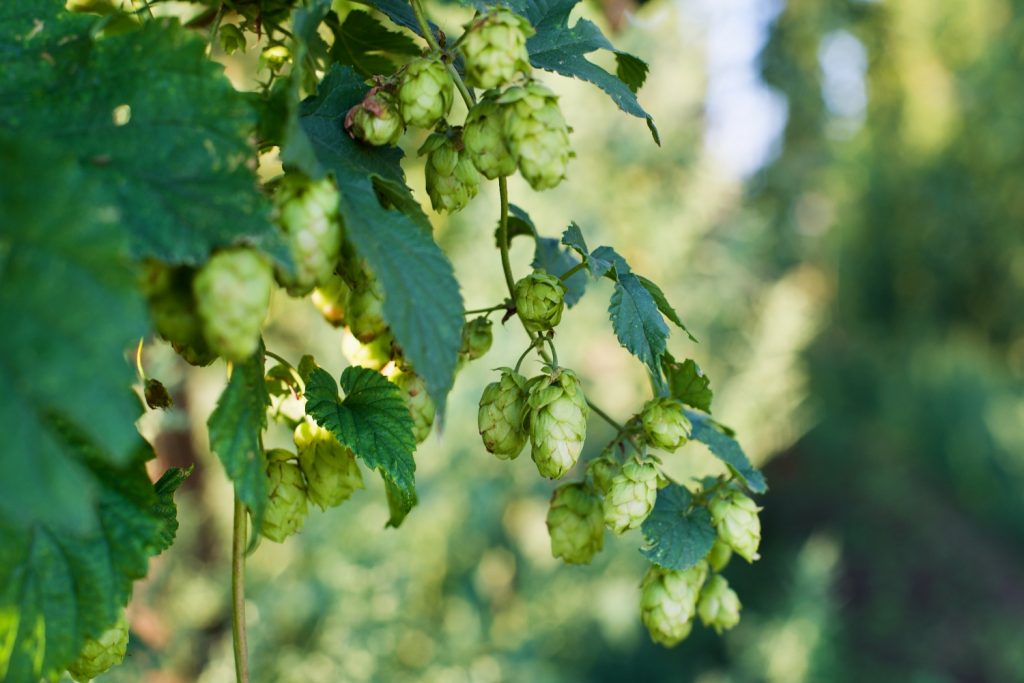
Mouse watermelon
These grape-sized fruits may look like watermelons, but they taste like sour cucumbers, which makes them perfect for pickling.
Of course, mouse watermelons are excellent for snacking, too. Also known as cucamelons and Mexican sour gherkins, mouse watermelons are tasty, and it’s surprising that they aren’t more popular.
Like cucumbers, mouse watermelons are a member of the cucurbit family. But unlike cucumbers, which produce male flowers first, mouse watermelons produce female flowers first.
But the similarities between mouse watermelon and cucumber outnumber their differences.
Grow mouse watermelons just as you would cucumbers: by planting them in sandy to loamy soil and in full sunlight.
Cantaloupe
Also known as muskmelons, cantaloupes have bumpy beige exteriors and tender, juicy, orange flesh. These fruits are delightfully refreshing, the perfect treat on a warm summer afternoon.
Cantaloupes grow quickly in warm climates and prefer to be planted in loose, loamy soils that drain well.
Although cantaloupe plants prefer to grow in well-draining soils, they also tend to produce more when watered regularly.
These fruit vines perform best with a drip irrigation system that keeps the soil evenly moist.
Be sure to water your cantaloupes deeply as needed to encourage healthy fruit production. Applying a triple 14 fertilizer to the soil at the start of the growing season will help these plants produce as well.
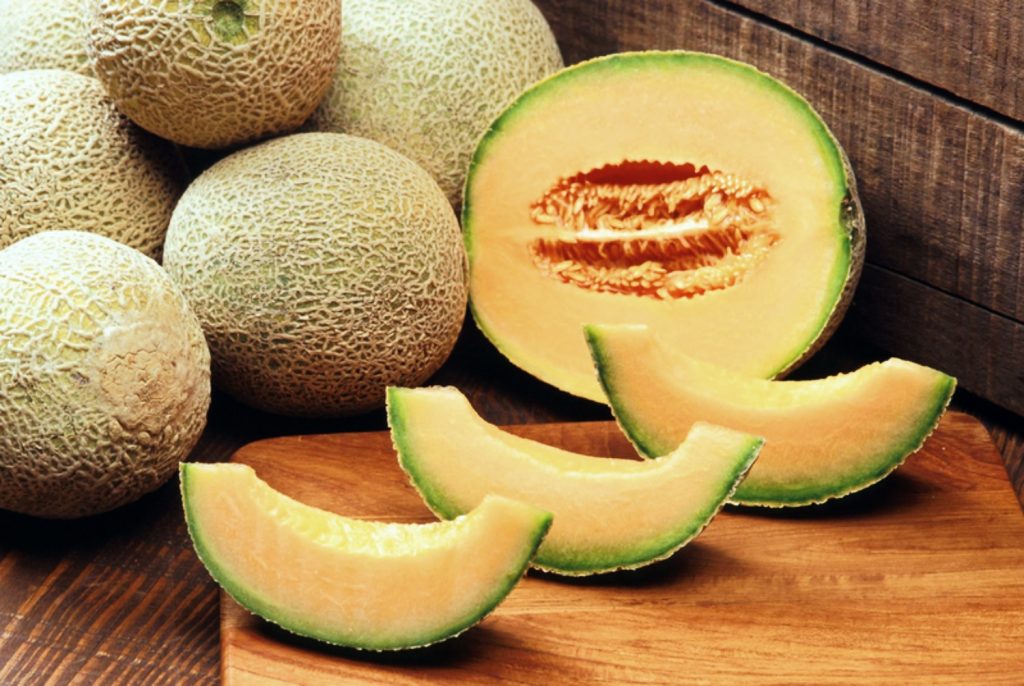
Passion fruit
Passion fruit vine is often grown for its eye-catching and exotic-looking flowers which have lovely purple petals, intricate filaments, and tall yellow anthers.
You can grow passion fruit vines to attract pollinators. These flowers are great for drawing the attention of beetles and butterflies.
Once pollinated, passion flowers begin producing fruits. Some passion flowers produce golden yellow fruits while others produce brownish-purple ones.
The fruits are tart and tangy but also slightly sweet, making them highly palatable.
Although many gardeners consider passion fruit to be invasive, this is an incredibly hardy plant that thrives in full sun, even in 90 to 100-degree heat.
When trained to grow over an arbor, passion fruit can provide some much-needed shade for the other plants in your garden.
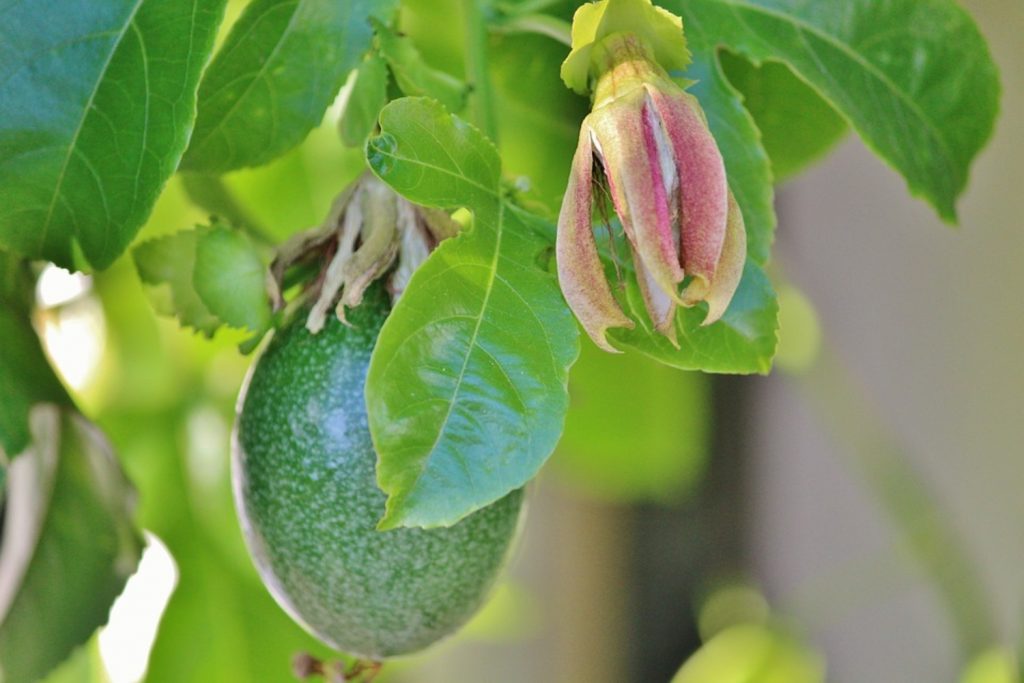
Raspberries
Whether you choose to grow red, golden, or black raspberries, these fast-growing fruit vines are perfect for anyone who enjoys making their own jams and jellies.
Raspberries perform best when trained to grow up a trellis. This keeps the foliage off the ground, improving air circulation at the base of the plant.
Better air circulation reduces the risk of diseases setting in.
You’ll find your raspberries are more prolific when the soil is slightly acidic. Raspberries also grow best in fertile soils, so amend your garden beds with compost and/or manure to improve the nutrient profile.
Once the berries begin to ripen, harvest them regularly. This encourages the plant to continue making new fruits for you to enjoy.
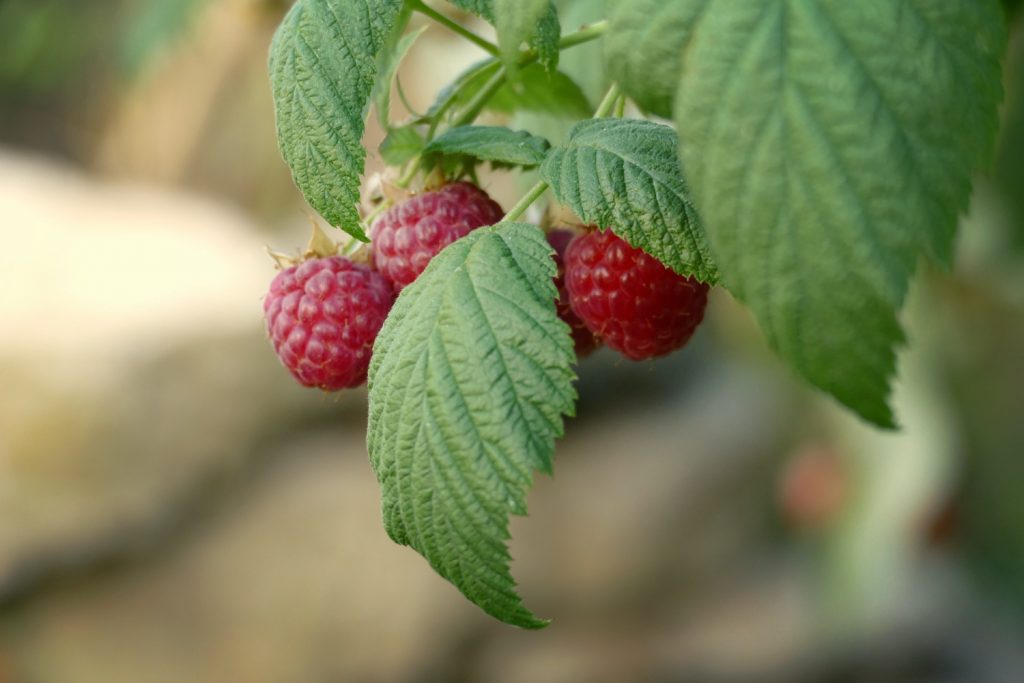
Choosing the right vining fruits for your garden
When it comes to choosing fruits to grow in your garden, it’s important to keep your backyard’s growing conditions in mind.
Some plants, like watermelons, cantaloupes, and honeydew melons grow best in full sun. But others, like blackberries and raspberries, need a bit more shade.
Soil is another factor that comes into play. Raspberries love nutrient-rich fertile soils, as do dragon fruits. But cucumbers and grapes grow better in sandy soils.
Be sure to read up on each fruit vine’s growing requirements to make sure you can meet their demands.
Growing different vining fruits can be fun. By choosing the right plants for your space, you’ll be making your job as a gardener much easier in the long run.
